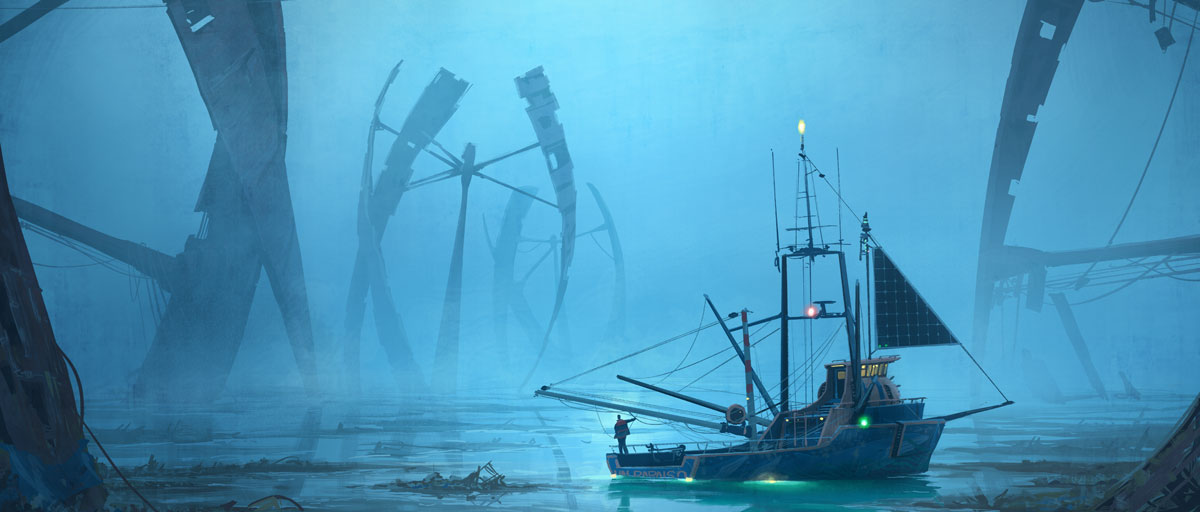Arts and Science
Marginalised communities fight back through science fiction

Scene from the movie Bacurau directed by Kleber Mendonça Filho and Juliano Dorneles. Photo: Vitrine Filmes.
Current Brazilian visual art envisions futures that foreground local communities’ perspectives on sustainability
- A new analysis has looked at how two science fiction stories imagine possible futures beyond human-focused narratives
- Both depict fictional marginalised communities that fight for their rights to ancestral lands and their ecologies in futuristic settings
- In the two artworks, fictional communities manage to defend their ways of life and keep the possibility of a self-determined future
LESSONS FROM SCIENCE FICTION: The sertão nordestino region in northeastern Brazil has recently been the backdrop for two visual science fiction stories: the film Bacurau by Juliano Dornelles and Kleber Mendonca Filho, and the comic Cangaço Overdrive by Zé Wellington and Walter Geovani.
A new analysis published in the journal Humanities and written by centre researcher Azucena Castro has looked at how these two stories imagine possible futures beyond mainstream neocolonial human-focused narratives.
The sertão nordestino is commonly described as backward. It is drought-prone and impoverished, and its people, many of whom have indigenous or African descent, have historically been marginalised.
These two visual cultural expressions represent the emerging concern for the future of marginal populations amidst socio-ecological inequalities. They attempt to decolonise the yet-to-come.
Azucena Castro, centre researcher
More than one possible future
That’s where artworks such as Bacurau and Cangaço Overdrive come in. They provide alternative narratives that can empower communities to create visions of sustainable futures for themselves.
“By merging regionalist history and culture with the present concern for the near future, the studied works use futuristic genres to raise the question of land ownership and management of natural resources in the impoverished northeast”, explains Castro.
Both Bacurau and Cangaço Overdrive depict fictional marginalised communities that fight for their rights to ancestral lands and their ecologies in futuristic settings. Threats from the outside, in the form of mafia-like structures of extractivist capital and colonial politics, are pushing these communities to extinction.

Artwork from Cangaço Overdrive by Zé Wellington, Walter Geovani and Luiz Carlos B. Freitas.
In the two artworks, the fictional communities manage to defend their ways of life and keep the possibility of a self-determined future, thanks to their deep entanglement with nature and other nonhuman powers.
Different visions of sustainability
“These two visual cultural expressions represent the emerging concern for the future of marginal populations amidst socio-ecological inequalities. They attempt to decolonise the yet-to-come,” explains Castro.
To describe the efforts of the works, Castro coins the term ‘vernacular sustainabilities’. This notion highlights that what is envisioned as sustainable futures differs if seen from the perspective of rich traditions from local and marginalised communities.
“These Brazilian visual productions question the notion of sustainability as a linear progression of human-centric futurity,” writes Castro.
Trailer for the movie Bacurau directed by Kleber Mendonça Filho and Juliano Dorneles.
Castro, A. 2022. Vernacular Sustainabilities—Multispecies Stories and Life-Death Entanglements of the Sertão Nordestino in Contemporary Brazilian Futurisms (The Film Bacurau and the Sertãopunk Comic Cangaço Overdrive). Humanities.
DOI: 10.3390/h11020050








